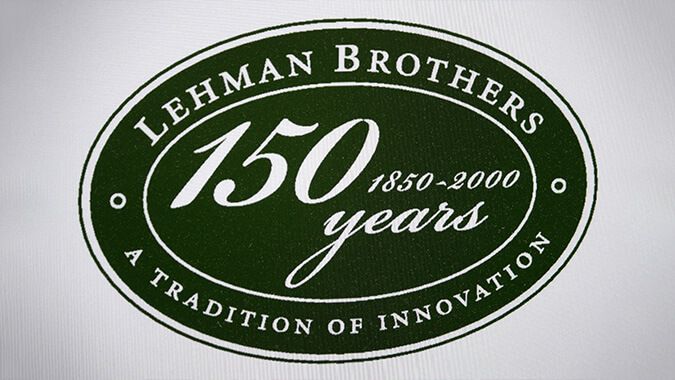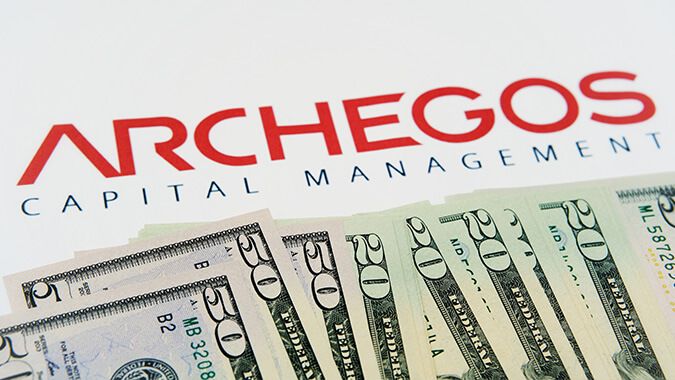Friday Mar 24 2023 05:48

8 min
Bear Stearns was respected. In business since 1923, and a survivor of the 1929 crash. Multiple billions in cash reserves.
Then, in 2008, it collapsed in less than a week.
What are the parallels with the fire sale of Credit Suisse? And what could it mean for you as a trader today?
Let’s take a look.
Let’s look at the facts:
On Monday 10th March 2008, Bear Stearns had $18 billion in cash reserves.
Three days later, on March 13th, they were down to just $2 billion.
On March 14th, CEO James Cayne was forced to admit that Bear Stearns could not open for business, and this institution was forced to sell to JPMorgan for $10 a share.
Just a year earlier, the share price had been $170.
Hedge funds operating within Bear Stearns had used excessive leverage to profit from Collateralized Debt Obligations (CDOs).
To create CDOs investment banks would gather cash-flow generating assets like mortgages and bonds, and repackage them into ‘bundles’ ranked according to how much credit risk they represented to the investor.
The sales pitch for these CDOs was simple enough. Invest, and receive the debt payments contained in the bundle.
At the time, CDOs containing mortgage debt were known as ‘mortgage-backed securities’, and were considered one of the safer ways to invest in CDOs.
Unfortunately, in the run up to 2008, sellers had been offering what was known as ‘sub-prime’ mortgages.
In other words, mortgages sold to people who, practically, didn’t have the financial means to pay them, and contained interest rates that increased over time.
When, in 2007, housing prices began to fall, it became much harder for these mortgage owners to refinance.
Then the higher the interest rates began to kick in, and ‘sub-prime’ mortgage holders began to default in massive numbers.
National credit rating agencies started to downgrade mortgage-backed CDOs, which made it much harder for the banks holding them to get the assets off their books.
Bear Stearns’ internal hedge funds had bought up huge numbers of CDOs and were unable to sell. They posted billions in losses as a result, and were forced to go to the Federal Reserve to ask for a loan.
The loan was refused. Within a few days, Bear Stearns had their own credit rating downgraded.
On March 13th, they simply ran out of money.

Though Bear Stearns was in the end bought by JPMorgan Chase, the story of these ‘sub-prime CDOs’ was out.
Suddenly, other financial institutions realised how risky these ‘safer’ assets were, and started to check their own books to see how much of this toxic debt they held.
Then Lehman Brothers revealed that they held $111 billion’s worth of real-estate backed assets and securities. And what’s more, a lot of these positions were heavily leveraged.
This began a race to try and sell-off the toxic assets and reduce their leverage. Post-Bear Stearns, though, investor confidence was at rock bottom and CDOs were almost impossible to sell.
Lehman Brothers, like Bear Stearns, was bust.
The only difference is, they were unable to find a buyer. An institution that first opened its doors in 1847 was bankrupt.
The news of such a treasured institution going broke sent the financial markets into a freefall. At one point, the Dow Jones suffered it’s single largest one day points loss in history.
This volatility in turn led to the global financial crisis and a near-worldwide recession.
Credit Suisse was born 167 years ago. It survived 1929 and the great depression, 1987’s Black Monday crash, and the 2008 financial crisis.
But in recent years, the investment bank has been rocked by multiple scandals:
And now it’s been sold for just $3 billion, a fraction of its real value.
“This time it’s different”
Credit Suisse’s fall from grace is another tale of toxic debt.
British company Greensill specialised in lending money to companies so they could in turn pay suppliers. From there, it packaged those company’s debts up, and re-sold them to investors.
(There’s a familiar ring to that.)
Credit Suisse bought in to the tune of around $10bn.
Then, one by one, credit insurers began to withdraw cover on Greensill after revelations that it was massively over-exposed to risk in steel and commodities.
Despite being owed $4.6 billion by businesses around the world, Greensill was quickly left without anyone to insure those debts.
Greensill tried to get a bailout, but after a brief court hearing in Sydney, they were turned out. Once again, it took less than a week for the company to go bust.
Credit Suisse spent months trying to recover the $10bn it was owed.
And the story doesn’t stop there.

Hedge fund Archegos (formerly known as Tiger Asia Management) had been re-built from the ground up by one man. Bill Hwang.
Responsible for managing around $10 billion, Hwang convinced a number of banks – Credit Suisse included – to lend an additional $30 billion to fund further investment.
One of Hwang’s biggest trades was Viacom. Initially, the trade was profitable, but then in 2021 Viacom shares crashed.
Credit Suisse called in debts, asking Archegos to cover their losses. They couldn’t. At this point, you can probably guess what came next. Archegos was declared bankruptcy.
This second debtor bankruptcy brutalised Credit Suisse shares. In the two years between Archegos going bust and Credit Suisse being sold, shares fell 83%.
On March 14th , 2023, Credit Suisse acknowledged “material weaknesses” in their internal financial reporting.
On Friday 17th March, Credit Suisse was worth around $6 billion.
By Monday 20th March, UBS agreed to purchase Credit Suisse for $3.25 billion. Nearly half what it had been worth just three days earlier.
Most shareholders are expected to be wiped out of their positions.
Repackaged debts… bank buyouts… shareholders being wiped out. It all sounds familiar.
What happens next? Nobody knows.
Just two days before Credit Suisse was sold, Silicon Valley Bank’s parent group filed for bankruptcy.
History doesn’t repeat… but it can echo.